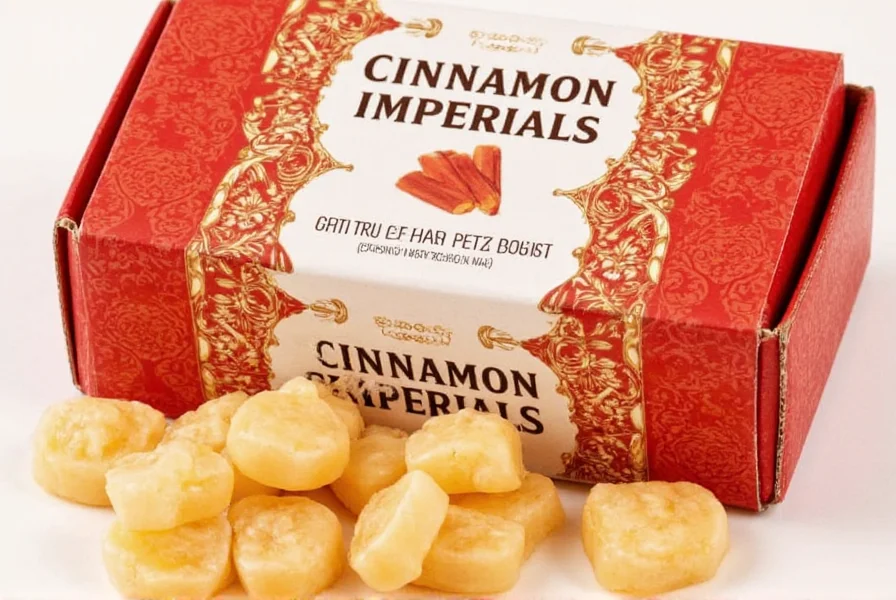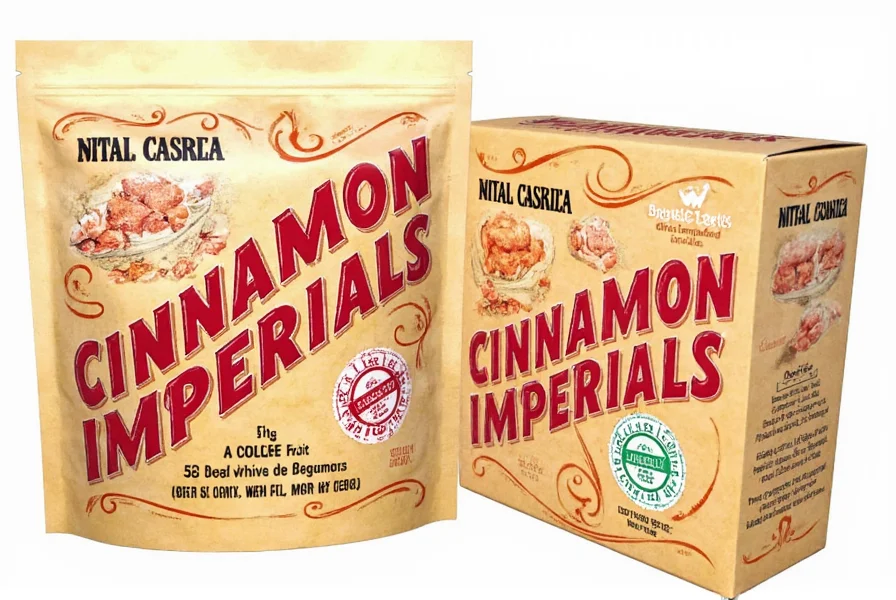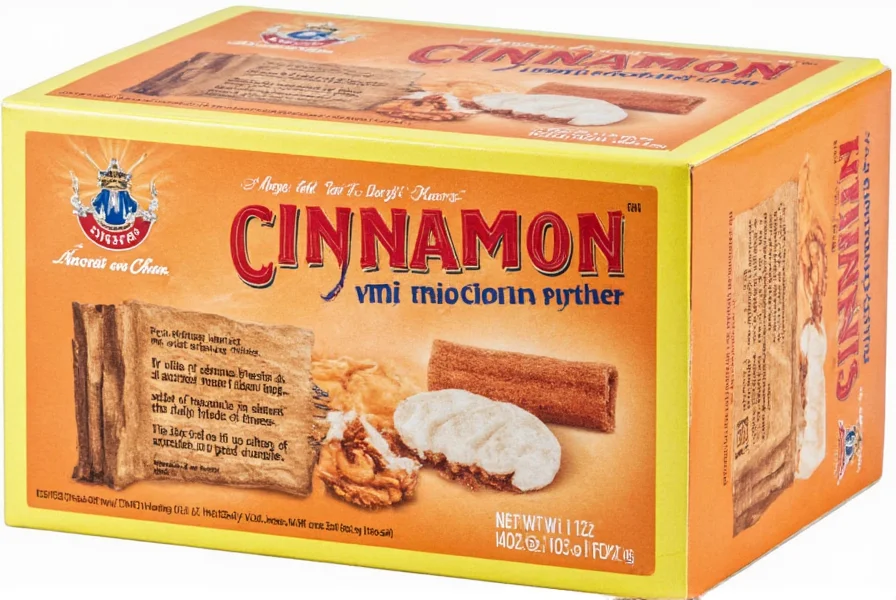Cinnamon Imperials represent one of America's oldest continuously produced candy varieties, with origins tracing back to the late 1800s. This traditional hard candy has maintained its distinctive characteristics through decades of changing candy trends, preserving the authentic cinnamon experience that originally made it popular. The candy's enduring appeal lies in its uncompromising flavor profile and historical significance within American confectionery culture.
The Historical Journey of Cinnamon Imperials
Developed during America's candy manufacturing boom in the late 19th century, Cinnamon Imperials emerged when hard candies were among the most popular confections. The candy's creation coincided with improved sugar refining techniques and the expansion of spice trade routes that made cinnamon more accessible to American manufacturers. Unlike many contemporary candies that have disappeared or significantly altered their formulas, Cinnamon Imperials have remarkably preserved their original characteristics.
During the early 20th century, these candies became particularly popular among working-class Americans who appreciated their long-lasting flavor and affordable price point. The Great Depression further cemented their place in American candy culture as an economical treat that provided extended enjoyment from a single piece. While many candy manufacturers consolidated or changed ownership over the decades, the recipe for authentic Cinnamon Imperials remained largely unchanged.
Distinctive Characteristics and Ingredients
What sets Cinnamon Imperials apart from other cinnamon candies is their specific formulation and physical properties. These candies feature:
- Traditional cinnamon oil as the primary flavoring (not synthetic alternatives)
- A flat, round disc shape approximately 1/2 inch in diameter
- A hard, non-dissolving texture that gradually releases flavor
- A pure cinnamon experience without menthol or cooling agents
- A distinctive reddish-brown color from natural cinnamon compounds
The ingredient list remains refreshingly simple compared to many modern candies: sugar, corn syrup, cinnamon oil, and food coloring. This minimalist approach contributes to the candy's authentic flavor profile that confectionery historians recognize as representative of late 19th-century candy making techniques.
| Candy Type | Shape | Flavor Profile | Texture | Historical Origin |
|---|---|---|---|---|
| Cinnamon Imperials | Flat disc | Pure cinnamon, no cooling effect | Hard, slow-dissolving | Late 1800s |
| Red Hots | Small cylinders | Intense cinnamon with slight cooling | Hard, fast-dissolving | Early 1900s |
| Atomic Fireballs | Spherical | Peppermint-cinnamon blend | Hard center, chewy exterior | 1950s |
Modern Availability and Production
Despite the dominance of newer candy products, authentic Cinnamon Imperials remain available through select manufacturers who honor the traditional recipe. Several regional candy companies and specialty confectioners continue producing these historic candies using methods that closely mirror the original manufacturing process.
Finding genuine Cinnamon Imperials requires knowing where to look, as they're not as widely distributed as mass-market cinnamon candies. Specialty candy stores, vintage confectionery retailers, and select online merchants offer these traditional treats. Some regional manufacturers in the Midwest and Northeastern United States have maintained production, often using the same equipment that's been in operation for decades.
When searching for authentic Cinnamon Imperials, look for products that specify 'old-fashioned' or 'traditional' in their description and avoid those listing artificial flavors or cooling agents like menthol. The most authentic versions will have a relatively short ingredient list focused on natural components.

Cultural Significance and Nostalgia Factor
Cinnamon Imperials occupy a special place in American candy history, representing a direct link to pre-World War II confectionery traditions. For many older Americans, these candies evoke strong memories of childhood treats purchased from penny candy stores or included in holiday stockings. The candy's distinctive flavor profile has remained consistent enough that generations within families can share the same sensory experience.
Food historians recognize Cinnamon Imperials as an important example of how traditional candy making techniques have survived in niche markets despite industrialization and changing consumer preferences. The candy's persistence demonstrates how certain food traditions can maintain relevance through authenticity rather than marketing innovation.
Finding Authentic Cinnamon Imperials Today
Locating genuine Cinnamon Imperials requires some effort but rewards candy enthusiasts with an authentic historical flavor experience. Consider these approaches:
- Check with regional candy manufacturers, particularly those with heritage dating to the early 20th century
- Visit specialty candy stores that focus on vintage or hard-to-find confections
- Explore online retailers specializing in retro candies and hard-to-find treats
- Ask at local candy shops about seasonal or special-order availability
- Look for products labeled 'old-fashioned' or 'traditional' rather than mass-market brands
When evaluating potential sources, examine the ingredient list carefully. Authentic Cinnamon Imperials should contain natural cinnamon oil rather than artificial flavors and avoid cooling agents like menthol that characterize many modern cinnamon candies. The texture should be hard and slow-dissolving, with flavor that builds gradually rather than hitting with an immediate intense burst.

Frequently Asked Questions
What makes Cinnamon Imperials different from Red Hots?
Cinnamon Imperials feature a flat disc shape and pure cinnamon flavor without cooling agents, while Red Hots are small cylindrical candies with a slightly different flavor profile that often includes subtle cooling elements. Imperials deliver a more gradual flavor release and maintain their traditional form without the bright red coloring typical of Red Hots.
Are Cinnamon Imperials still being manufactured today?
Yes, though not by major national candy brands. Several regional manufacturers and specialty confectioners continue producing authentic Cinnamon Imperials using traditional methods. These candies are typically available through specialty candy stores, vintage confectionery retailers, and select online merchants rather than mainstream grocery stores.
Why don't Cinnamon Imperials have the cooling sensation of other cinnamon candies?
Traditional Cinnamon Imperials use pure cinnamon oil without added menthol or other cooling agents that characterize many modern cinnamon candies. This results in a straightforward, spicy cinnamon experience that builds gradually as the candy dissolves, representing the authentic flavor profile that made these candies popular in the late 19th and early 20th centuries.
How can I identify authentic Cinnamon Imperials when shopping?
Look for candies with a flat, round disc shape approximately 1/2 inch in diameter, a reddish-brown color, and a simple ingredient list featuring natural cinnamon oil. Authentic versions will lack artificial flavors and cooling agents like menthol. Products labeled 'old-fashioned' or 'traditional' are more likely to represent the genuine article rather than modern interpretations of the classic candy.











 浙公网安备
33010002000092号
浙公网安备
33010002000092号 浙B2-20120091-4
浙B2-20120091-4